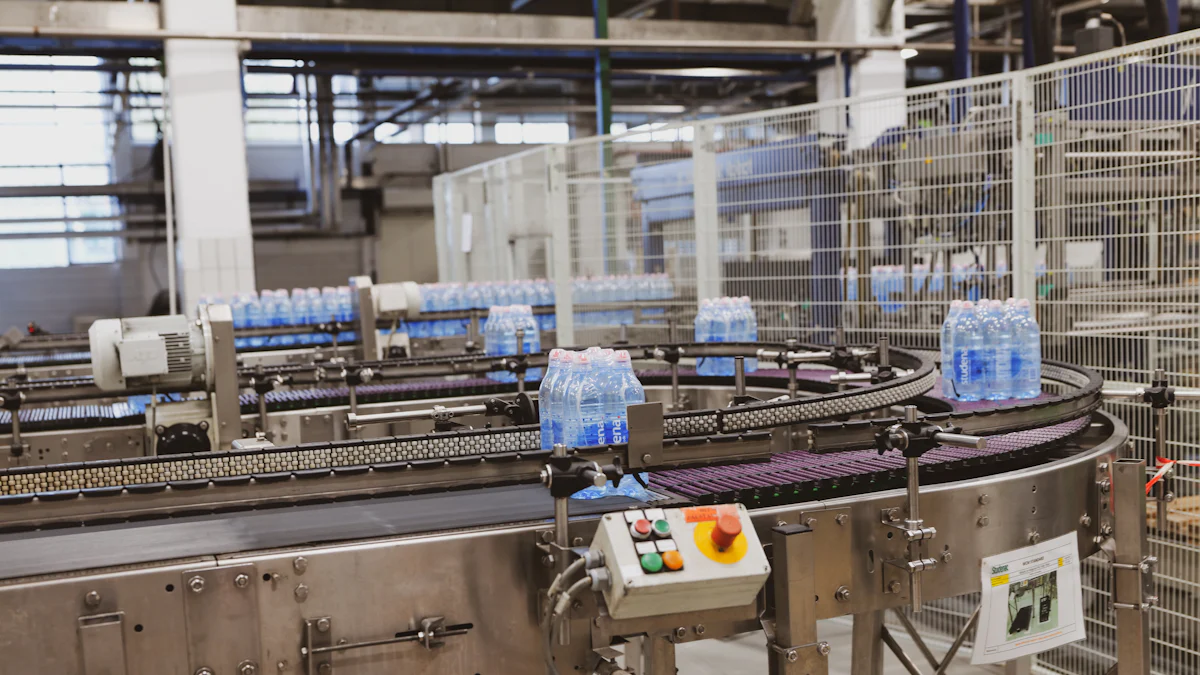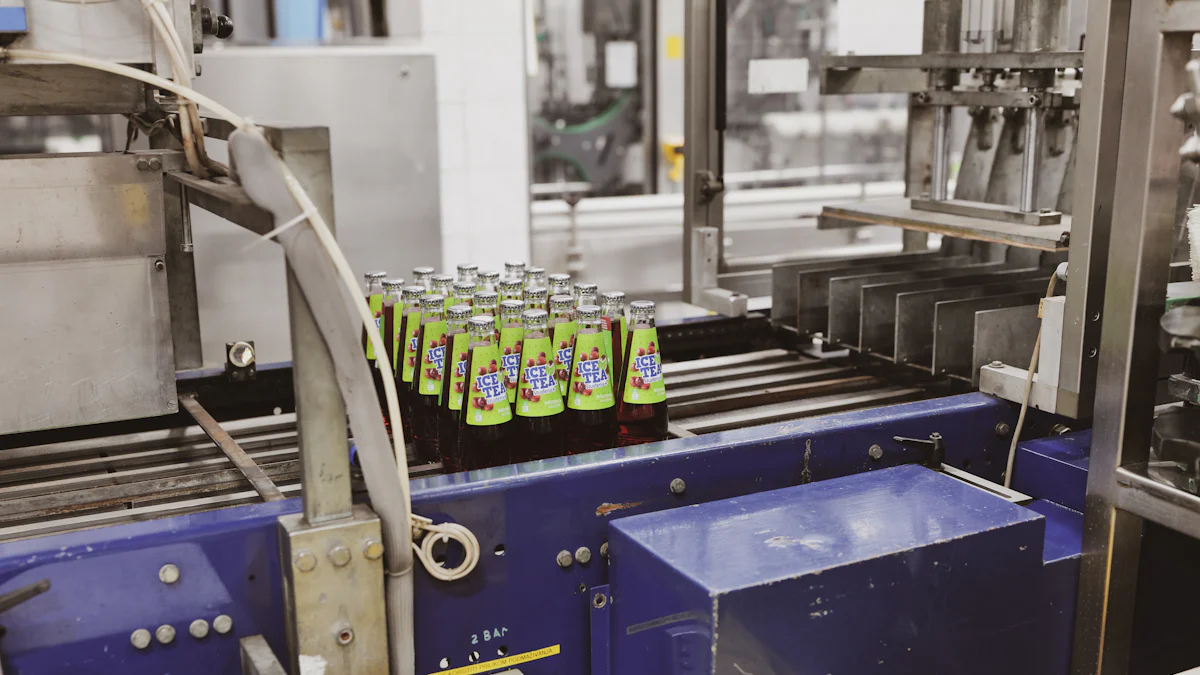
News
Variable frequency drives (VFDs) have significantly transformed the packaging machinery market. They enable motors to operate at the optimal speed for each task, resulting in energy savings, reduced electricity costs, and positive environmental impacts. VFDs also allow for real-time monitoring of machines, facilitating early problem detection and resolution. Their flexibility supports factories in managing increased workloads and adapting to changes in demand.
Key Takeaways
VFDs control motor speed to save energy and cut costs.
They help factories adjust fast to changes and work better.
VFDs lower pollution and waste, supporting green packaging ideas.
Understanding VFDs in the Packaging Machinery Market
What Are VFDs and Their Role in Packaging Machinery?
A variable frequency drive (VFD) controls how fast motors run. In packaging machines, VFDs help motors work better. They change motor speed to match the task, saving energy. This reduces wasted power and lowers electricity bills. VFDs also make machines last longer by starting and stopping smoothly. This reduces wear and tear on parts. They are flexible, letting factories quickly adjust to new production needs.
The Importance of VFDs in Industrial Automation
VFDs are very important in factory automation, especially for packaging. They control motors precisely, which helps keep product quality high. By matching motor speed to the job, they save energy and cut costs. VFDs also have safety features like emergency stops, making workplaces safer. They help the environment by using less energy and cutting emissions. This supports eco-friendly goals in the industry.
Key Features That Make VFDs Essential for Packaging
These features make VFDs a must-have for packaging machines. They help factories meet demand and stay ahead in the market.
Efficiency and Energy Savings with VFDs

How VFDs Improve Motor Performance
VFDs help motors work better in packaging machines. They change motor speed to fit the job. This makes motors run more efficiently. For example, when less power is needed, the VFD slows the motor. This reduces stress and helps the motor last longer. Smooth starts and stops also protect machine parts from damage. This not only boosts performance but also lowers repair needs.
Cutting Energy Use and Costs
Energy bills are a big cost for packaging factories. VFDs help save money by using less energy. They let motors run only when needed, not all the time. This saves electricity and reduces waste. For example, a VFD can slow a conveyor belt during quiet times. This keeps work going while saving power. Using VFDs also helps the planet by cutting carbon emissions.
Real-Life Success Stories
Many companies have improved by using VFDs. A drink company saved 30% on energy by adding VFDs to bottling machines. A food factory made work faster by adjusting motor speeds during busy and slow hours. These examples show how VFDs save energy and cut costs while meeting industry needs.
Flexibility and Customization in Packaging Machinery
Modular Designs Made Possible by VFDs
Modular designs make packaging machines easier to set up. VFDs help by using built-in motors, cutting wiring and labor costs. Some users save up to 30% on setup work this way. Flexible motor placement lets machines fit into different spaces. This makes sure equipment works well in many factories. Modular designs also allow quick part upgrades or replacements. This keeps machines running smoothly and meeting customer needs.
Special Programming for Different Jobs
VFDs can be programmed for specific tasks. This helps machines handle different materials or product sizes. You can change motor speed and power to match the job. This makes machines work better for many uses. Whether packing light items or heavy goods, VFDs improve performance. This boosts productivity and keeps customers happy by meeting their needs.
Keeping Up with Market Changes Using VFDs
The packaging market changes often, and VFDs help you adapt. They adjust motor speed to save energy and reduce waste. Smart features allow real-time checks and quick fixes, cutting downtime. You can also change production quickly for new products. VFDs include safety tools and meet global rules, building trust. These benefits improve efficiency, save money, and support long-term success.
Advanced Technologies Driving the Packaging Machinery Market

Combining VFDs with AI and Machine Learning
AI and machine learning are changing how VFDs work. These tools help VFDs adjust to changes, making work easier. For example:
AI checks sensors to find problems before machines break.
Smart systems guess future needs to keep motors running well.
VFDs can change motor speeds instantly to save energy.
Big data helps improve how systems work by using lots of info.
These updates mean less human effort is needed. They also give clear details about how machines are working. As AI improves, VFDs will get smarter. They will work better with other smart devices in factories.
Better Software for Improved Control
New software is making VFDs more advanced. Modern VFDs use smart programs to handle tricky tasks. For instance, they adjust settings to match what’s needed. This keeps product quality high and reduces waste.
Advanced tools also find problems and suggest fixes. This helps machines work their best. With cloud systems, you can check and control VFDs from anywhere. This boosts work speed and helps track everything on the production line.
IoT and the Future of VFDs
The Internet of Things (IoT) is making VFDs more useful. IoT lets VFDs monitor machines, predict problems, and fix issues remotely. These features make factories run better and faster.
IoT also collects data to track how machines perform. This helps find slowdowns and make smart choices. As IoT grows, VFDs will help build smarter factories. This will meet the need for better and greener packaging solutions.
Sustainability and Cost Savings in Packaging Machines
Cutting Carbon Emissions with Energy-Saving VFDs
Energy-saving VFDs help packaging machines use less energy. They can lower energy use by 30-40% in many cases. This reduces carbon emissions and supports eco-friendly goals. VFDs also make packaging more precise, cutting material waste. Using fewer materials saves resources and lowers your carbon footprint.
Today, only about 20% of motors in packaging machines use VFDs. This shows there’s room to reduce carbon emissions even more. The table below explains how VFDs help the environment:
Reducing Material Waste in Packaging
Material waste is a big problem in food and drink industries. VFDs help by controlling machines more precisely. They adjust motor speeds to use just the right amount of material. This prevents overuse, saving money and helping the planet.
VFDs also let you watch production lines in real time. This helps find problems and fix them quickly. By doing this, you can reduce waste and keep quality high. These features make VFDs important for eco-friendly packaging.
Saving Money with VFDs Over Time
Using VFDs saves money in the long run. They cut energy use, lowering electricity bills. Smooth motor control also reduces wear, cutting repair costs. Better efficiency means higher productivity, meeting growing market needs.
While VFDs may cost more upfront, they save money over time. Many companies see big returns through energy savings and better machine performance. Adding VFDs to your machines helps save money and grow your business sustainably.
VFDs are key to new ideas in packaging machines. They save energy by cutting waste and lowering emissions. Their flexibility helps factories handle changing production demands easily. With tools like IoT and smart maintenance, VFDs make work smoother. These improvements help the industry grow while staying eco-friendly.
FAQ
What is the main benefit of using VFDs in packaging machinery?
VFDs help motors work better, saving energy and money. They also make machines more flexible, so you can adjust to changes fast.
Are VFDs difficult to install and maintain?
No, modern VFDs are simple to use. They are made for easy setup and care. You can also check and fix them from afar with smart tools.
How do VFDs contribute to sustainability in packaging?
VFDs use less energy and cut down on waste. They improve motor use, lower pollution, and support eco-friendly goals.
Please give us a message